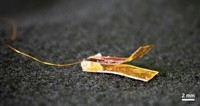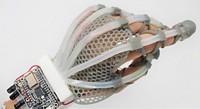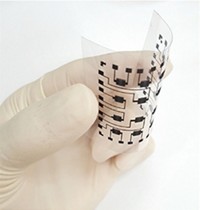Advertisement
Grab your lab coat. Let's get started
Welcome!
Welcome!
Create an account below to get 6 C&EN articles per month, receive newsletters and more - all free.
It seems this is your first time logging in online. Please enter the following information to continue.
As an ACS member you automatically get access to this site. All we need is few more details to create your reading experience.
Not you? Sign in with a different account.
Not you? Sign in with a different account.
ERROR 1
ERROR 1
ERROR 2
ERROR 2
ERROR 2
ERROR 2
ERROR 2
Password and Confirm password must match.
If you have an ACS member number, please enter it here so we can link this account to your membership. (optional)
ERROR 2
ACS values your privacy. By submitting your information, you are gaining access to C&EN and subscribing to our weekly newsletter. We use the information you provide to make your reading experience better, and we will never sell your data to third party members.
Materials
Touch Sensors Detect Bending, Stretching, And Twisting
Materials: Researchers draw inspiration from skin structure to design polymer sensors that can detect the direction of tactile forces
by Katherine Bourzac
December 2, 2014

A stretchy touch sensor, designed to mimic structures in human skin, can detect not only the strength of a mechanical force but also its direction (ACS Nano 2014, DOI: 10.1021/nn505953t). This sensor, which can distinguish between shearing, stretching, bending, and twisting forces, could improve the functionality of prosthetic devices and robotics.
Human skin is a fantastic touch sensor, says Hyunhyub Ko, a chemical engineer at Ulsan National Institute of Science & Technology, in South Korea. It’s stretchy and highly sensitive, with the ability to sense a large dynamic range of forces from the light touch of a tiny insect landing to a hard slap. Also skin can sense the direction of a force, allowing it to distinguish between types of forces. This ability helps our brains make all kinds of unconscious decisions. For example, we feel how an object is slipping in our hand, allowing our fingertips to adjust their applied pressure to catch it. Sensing stretching helps us keep track of the position and movement of our joints. If tactile sensors could achieve these capabilities, Ko says, the devices could improve the coordination of robots and the sensitivity of prosthetics.
To try to get direction sensing in a human-made sensor, Ko looked to the structure of human skin. Our skin has two interlocked layers, the epidermis on the outside and the dermis on the inside. Microscale bumps where the two layers meet help to amplify and transduce mechanical forces from the surface of the skin to nerve endings in the dermis. Ko mimicked these interlocked bumps in his sensor design through two layers of stretchy polydimethylsiloxane (PDMS) mixed with conductive carbon nanotubes. He makes the sensors by pouring a mixture of PDMS monomers and the nanotubes into a mold and then curing it. Each layer has an array of 3-µm-tall, 4-µm-diameter microdomes that interlock with the bumps on the other layer.
Ko’s group creates sensors by grouping together patches of this double-layered material and applying a voltage across them. The nanotubes make the PDMS conductive, with current passing through contacts between the interlocked microdomes. Different types of forces change how these layers interact, which in turn affects the conductivity. The researchers can detect these changes in conductivity through patterns in the resistance through the sensors over time. “Different forces—normal, shear, stretching, or bending backwards and forwards—produce a different pattern of electrical signals,” Ko says.
To demonstrate the possibilities, the researchers made measurements with three-by-three sensor arrays, showing how they could differentiate among types of forces. They also taped the sensors onto their elbows, wrists, and other body parts to show that they could monitor the different forms of motion at joints.
Changhyun Pang, a chemical engineer at Sungkyunkwan University, in South Korea, who also works on tactile sensors, says the interlocked domes give Ko’s devices the sensitivity to detect unique types of forces, not just bending, twisting, and shearing. For example, he says, the devices can measure different intensities of airflow or vibrations.





Join the conversation
Contact the reporter
Submit a Letter to the Editor for publication
Engage with us on Twitter